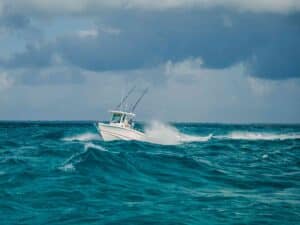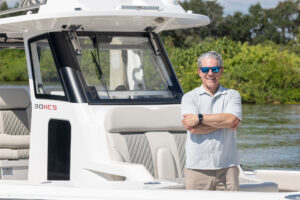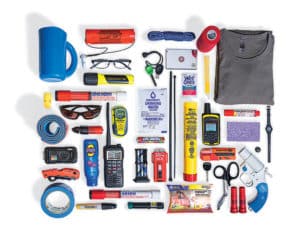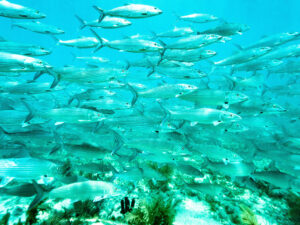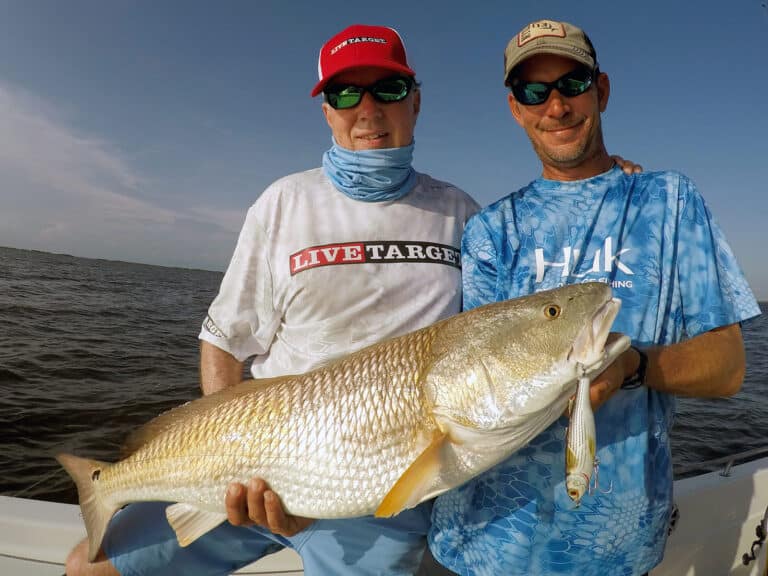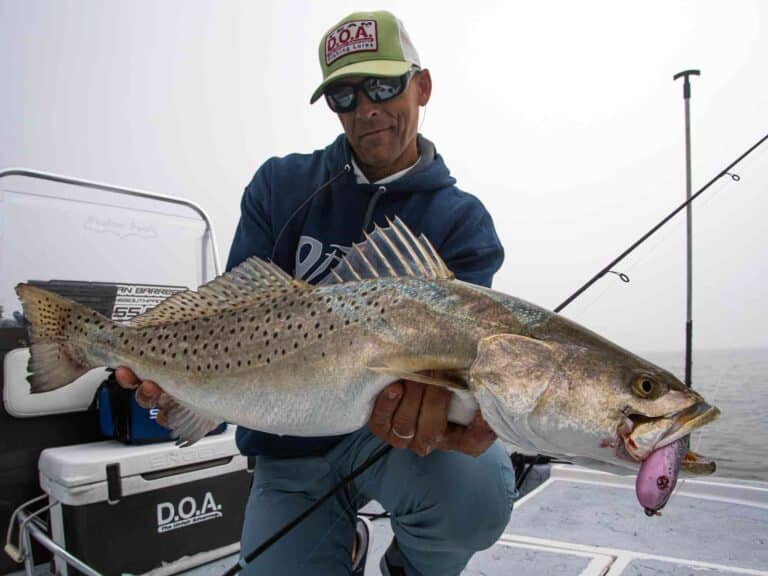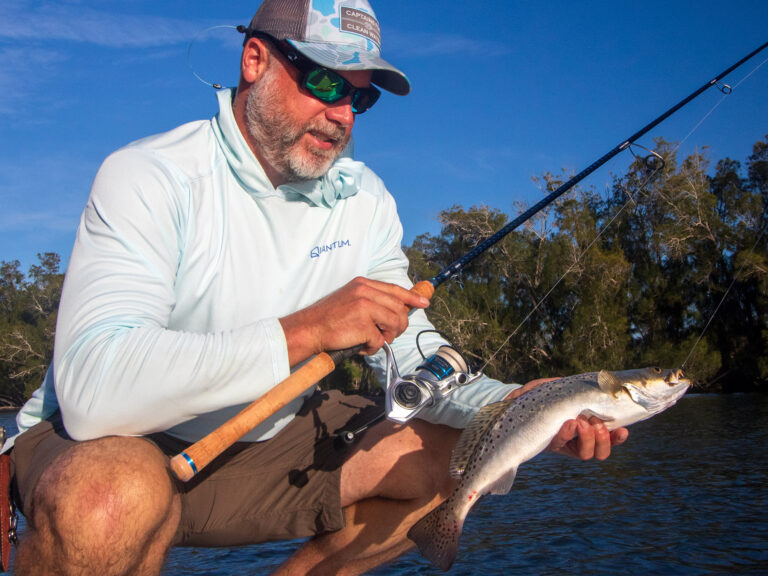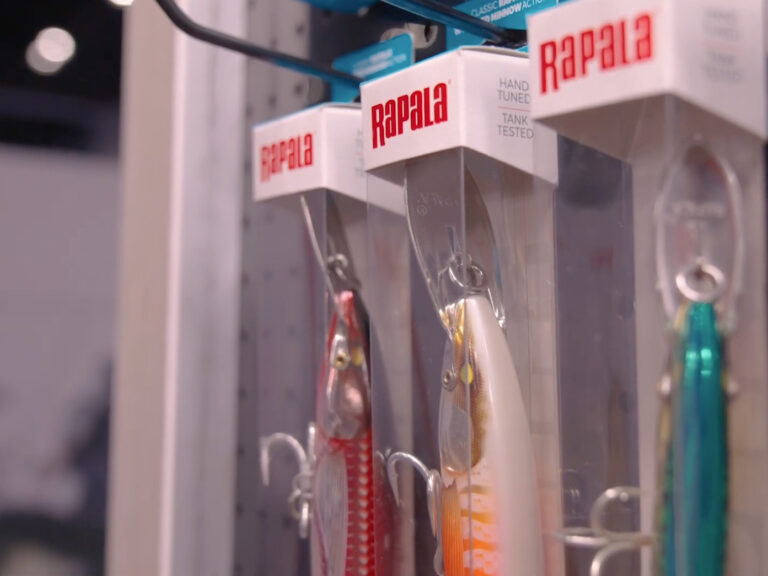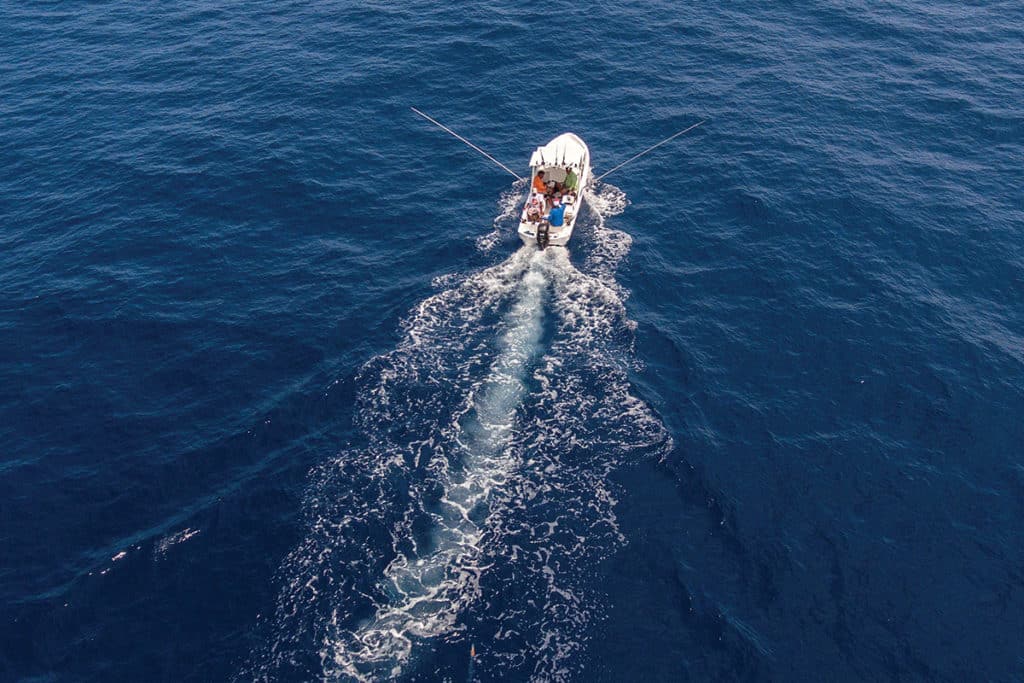
Speed can make or break your trolling success, and yet there’s not one single speed fishermen rely on day after day. Variables such as your heading (up-sea or down-sea), weak or strong currents you must cross, winds that vary in direction and strength, and the height of wave swells all affect your offshore trolling speed daily.
“The best way to control speed is to watch your skirted baits and keep bumping up faster and faster, until your baits start to spin,” says Capt. Anthony Mendillo, of Keen M Sport Fishing in Isla Mujeres, Mexico. “Then slow down until your presentation swims true, and you’ve found your peak natural-bait trolling speed for the day.
“Use the same tactic when slow trolling,” he explains. “Go as slow as possible until the baits no longer swim properly, then bump up your speed. I have four different boats, and they all have different trolling speeds. I use this technique to figure out the best speed each day.”
Trolling in Clean Water Behind the Boat
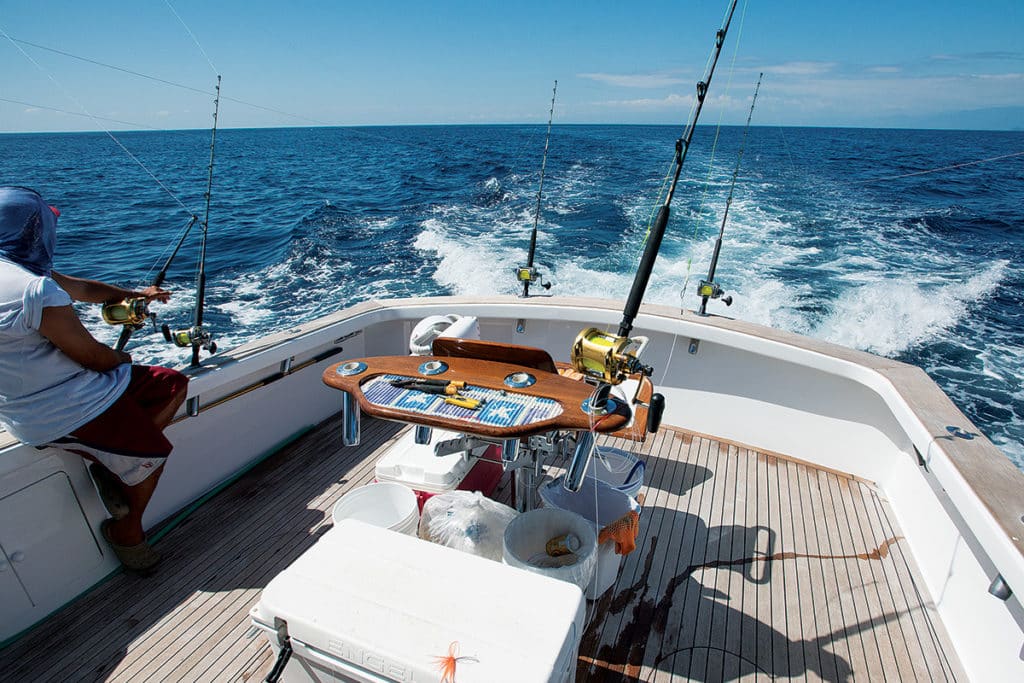
Optimal trolling placement for baits often requires finding that clean-water alley behind the boat. Bigger boats produce bigger wakes, so you need to go more slowly to get those pockets of clear water.
“Smaller center-consoles need to troll faster to produce a wake with any white water at all,” says Adam LaRosa, owner of Canyon Runner Sport Fishing in Point Pleasant, New Jersey. “[Center-consoles] have a ton of white water up close, so flat lines don’t work well in that dead zone, but you still need that much white water to produce a wake of any substance.”
The Ripper tournament fishing team, based in Tampa, Florida, and composed of Darren Impson and Matt Taylor, fishes out of a 36-foot Yellowfin with triple Mercury Verado 350s.
“Outboards tend to kick out more white water than inboards,” says Impson. “The faster you go, the more white water you are going to push back into the baits, and the less the fish are going to be able to see your baits.”
Impson and Taylor say 9 knots is the best trolling speed for their boat in most conditions when trolling Ilander/horse-ballyhoo combos for marlin and yellowfin tuna in the Gulf of Mexico. But conditions can get nasty when trolling 100 to 230 miles offshore, along the Gulf’s continental shelf.
“If conditions are really rough, trolling becomes tricky, and you have to work your troll in the best direction possible, usually in the troughs,” says Impson. “Then we put our baits a little farther back in the spread in order to reach cleaner water.”
Don’t be afraid to play with varying speeds all day long, especially in rough sea conditions, to best present your baits.
Professional Captains Explain Their Best Trolling Speeds
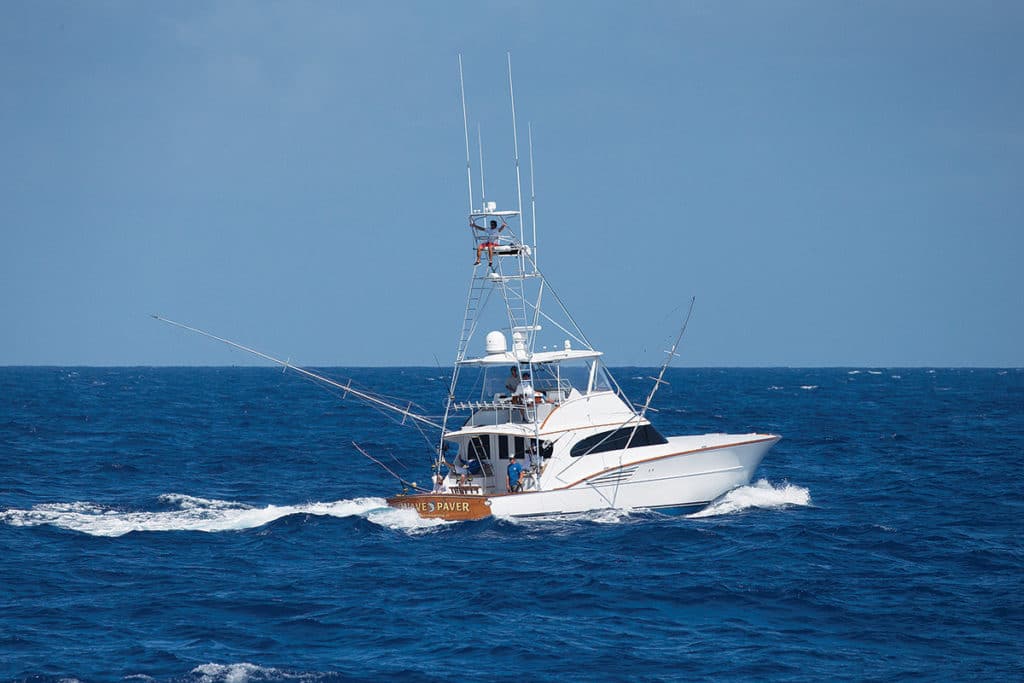
A variety of speeds, from 2 to 9 knots, encompass trolling “sweet spots” for several respected charter captains. Chances are you can steal a speed and trolling pattern from one of these experts.
Capt. Darren Impson; Clearwater Beach, Florida; 36-foot Yellowfin
We typically fish at 9 knots, looking for that instinctive bite. Our main troll presentations include fresh bait behind plugs, using fluorocarbon leaders to get more strikes. Nine knots allows the bait to look natural in the water, with the right movement and bubble stream, without washing the baits out quickly.
When fishing with naked ballyhoo (no plugs or skirts), we troll even slower, at 4 to 5 knots. A naked ballyhoo should skip perfectly as long as it’s rigged correctly, and there is no better trolling bait out there. Of course, without a plug or skirt in front of it, anglers risk getting cut off by a toothy critter. A plug or skirt in front of the bait not only protects it from washing out, but also provides some protection from the sharp teeth of a wahoo or barracuda.

Capt. Allen DeSilva; Hamilton, Bermuda; 65-foot Hatteras, Es Mucho
Trolling Speed for Marlin
My trolling speed varies for many reasons, from the type of bait to the target species. For everyday marlin fishing with dead bait or lures, 8.5 knots is a good all-around speed. Both baits and lures run great, plus most boats have a great hum at this speed. For tuna fishing, I find a slower pace of 6.5 to 7 knots gets more bites than my everyday speed. Plus, at this speed, my boat throws a cleaner wake that the tuna seem to like. Live-bait fishing requires slow (2- to 4-knot) speeds, allowing live baits to swim naturally.
Capt. Anthony Mendillo; Isla Mujeres, Mexico; 41-foot Michael Fitz, Keen M
There is no set trolling speed for me. I troll naked baits between 3 and 8 knots regularly. For sailfish, when fishing near baitfish schools, that’s when we tend to slow our speed. Truthfully, the best speed is the one that garners the most bites — not raised fish, not lookers, but actual, true bites.
Capt. Deane Lambros; Point Pleasant, New Jersey; 48-foot Viking
Trolling Speed for Tuna
I prefer to hunt bigeye tuna, and 6 to 6.5 knots seems to be the speed that produces best while also attracting other tunas and marlin. When we’re targeting bigeyes, the baits we pull — mostly split-billed ballyhoo — and certain plugs work best at this speed. Fellow captain Phil Dulanie, who runs a 60-foot Ritchie Howell, prefers 6.8 to 7.2 knots for pulling spreader bars and lures for tuna. In addition, the sounds of the engines and wake produced by my 48-foot Viking with a CAT C8.7 are best at this speed. Depending on sea conditions, my speed does fluctuate — faster on calm days and slower on rough.
Try a Faster Trolling Pace
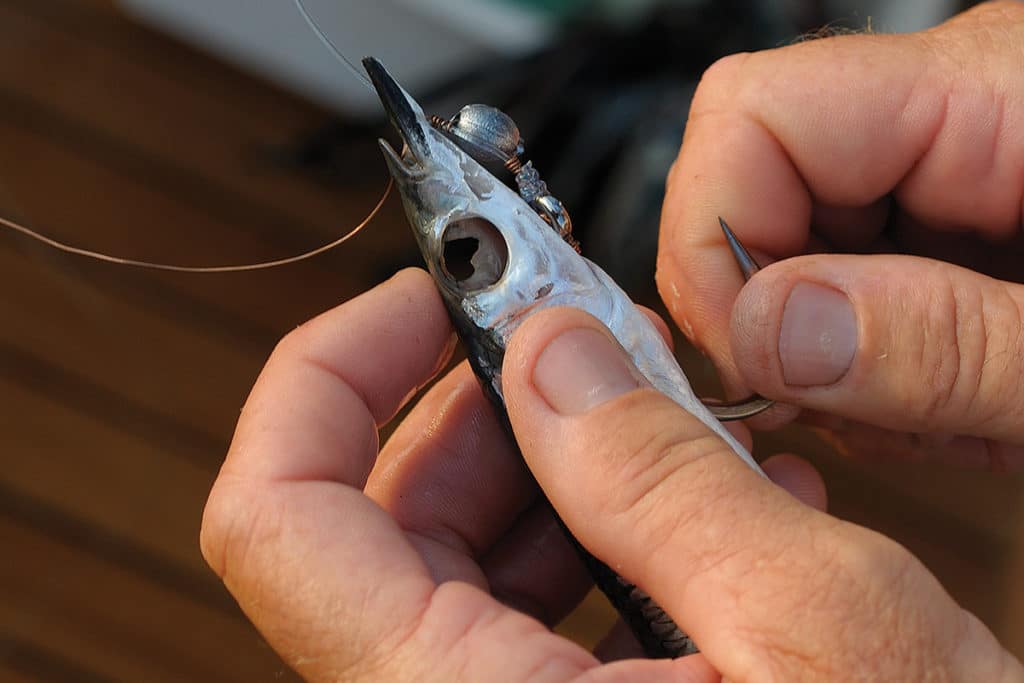
Anglers can get heavy with the throttle when conditions allow and they want to pick up their trolling speeds. New Jersey captains Dulanie and Lambros troll specific speeds when targeting marlin. For blue marlin, Dulanie says he trolls plugs up to 9 knots. “On the other hand, for white marlin, we really slow down to 5.5 to 6 knots and troll dink ballyhoo,” he adds.
If you are not using baits, you can pull plastic plugs faster, to 10 knots. “Any [speed] faster than 10 knots, [and] you typically have to fish with trolling weights and wire line in order to keep the baits down below the surface,” says Impson.
Wahoo are one species that truly excels at those high trolling speeds. Ten to 12 knots is no problem for a trolling speed for wahoo. “I refer to it as ‘travel fishing’ or ‘scouting,'” says DeSilva, “when you are fishing to a known hot spot or looking for one. [Ten to 12 knots] is fast enough to get you where you’re going, but not too crazy on the fuel burn.”

